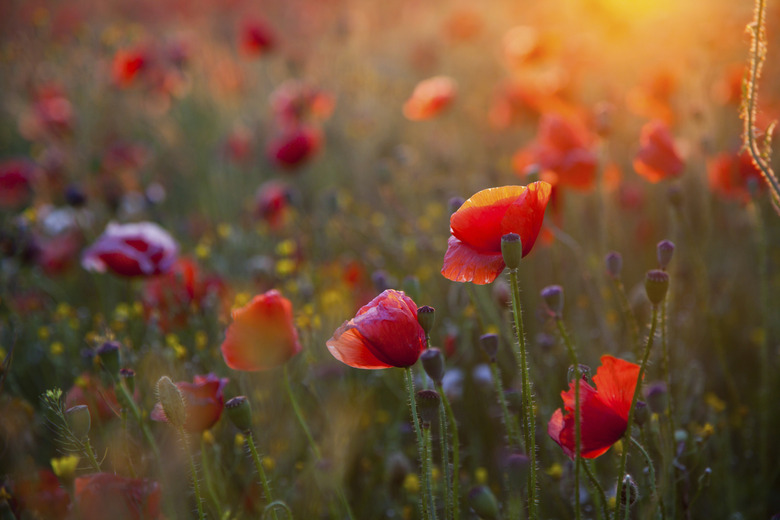The Effect Of Alcohol On Plants
Through the process of photosynthesis, plants covert solar energy, water and carbon dioxide into carbohydrates and oxygen. Life on earth depends on the presence of plants. However, plants often come into contact with alcohols. Alcohols are organic chemicals with a hydroxyl (OH) group bonded to a carbon (C) atom, which is often bonded to other carbon atoms or hydrogen atoms. The results vary when plants are allowed to metabolize alcohol.
Metabolism of Alcohols
Metabolism of Alcohols
The enzyme alcohol dehydrogenase is found in most living organisms, including humans, bacteria and plants. This enzyme catalyzes the reaction of an alcohol into an aldehyde or ketone by removing a hydrogen from the alcohol. There are a variety of alcohols. Among the most common are methanol, ethanol and isopropyl alcohol. Each alcohol is converted into a different aldehyde or ketone by alcohol dehydrogenase. For instance, in humans, ethanol is converted into acetylaldehyde, while methanol is converted into formaldehyde.
Ethanol
Ethanol
Ethanol, or grain alcohol, is produced by the fermentation of grains. Ethanol is the alcohol found in alcoholic beverages. Ethanol tends to stunt the growth of plants. When ethanol is applied to flowers, scientists note that, when watered with a 5 percent solution of ethanol, plant growth slows. When a 10 percent alcohol solution is applied, the plant becomes stressed and, with a 25 percent alcohol solution, the plant dies. This can be useful if growth of the plant needs to be supressed, as is the case with many flowers. Once the flower gets larger, it wilts and loses its aesthetic value. Using ethanol, the flower can be kept smaller for a longer period of time.
Methanol
Methanol
Methanol is the simplest alcohol. It is often used as a racing fuel and as a solvent. Studies have shown that methanol actually stimulates the growth of many cultivated plants. Methanol is used by the plant's metabolism in the same way the plant uses carbon dioxide. A solution of 30 percent methanol seems to be most effective in increasing plant yield.
Isopropyl (Rubbing) Alcohol
Isopropyl (Rubbing) Alcohol
Seventy percent isopropyl alcohol is sold for antiseptic use. At this concentration, it may safely be sprayed on plants to kill aphids. If the plant is watered with rubbing alcohol, the effects are similiar to those of ethanol. At 5 percent concentration, plant growth is stunted, while concentrations higher than 25 percent tend to damage or kill the plant.
Alcoholic Beverages
Alcoholic Beverages
Alcoholic beverages contain ethanol at different dilutions. Hard liquors, such as vodka and whiskey, may be diluted and applied to plants to restrict plant growth. Beer or wine, however, should never be applied to plants. The sugar content of beer and wine encourages bacterial and fungal growth, which will damage or kill the plant.
Cite This Article
MLA
Nicholson, Jeremy. "The Effect Of Alcohol On Plants" sciencing.com, https://www.sciencing.com/effect-alcohol-plants-8006187/. 13 March 2018.
APA
Nicholson, Jeremy. (2018, March 13). The Effect Of Alcohol On Plants. sciencing.com. Retrieved from https://www.sciencing.com/effect-alcohol-plants-8006187/
Chicago
Nicholson, Jeremy. The Effect Of Alcohol On Plants last modified August 30, 2022. https://www.sciencing.com/effect-alcohol-plants-8006187/
